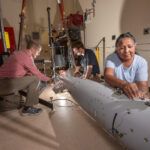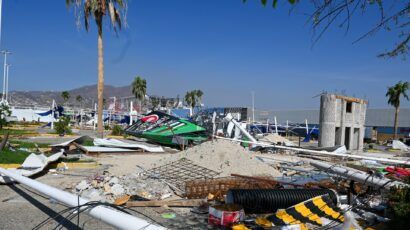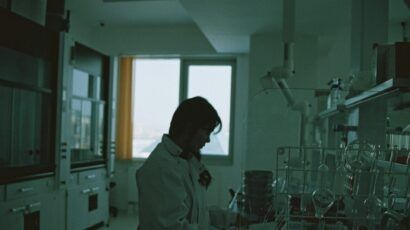Converting a civilian enrichment plant into a nuclear weapons material facility
By Ivanka Barzashka | October 31, 2013
Iran’s nuclear program—specifically its ongoing uranium enrichment—has long been the subject of much debate. Iran insists its enrichment is peaceful, but the international community worries that Iran could be seeking to acquire a nuclear weapon. But exactly how can a civilian enrichment plant be turned into one that produces nuclear weapons material?
There are two paths to a bomb: using either uranium or plutonium. For either path, obtaining the material is considered one of the greatest hurdles to overcome.
Uranium has two isotopes—235 and 238. Uranium 235 powers both nuclear reactors and nuclear bombs, but it is less than 1 percent of naturally occurring uranium. The concentration of uranium 235 needs to be increased to about 5 percent (low-enriched uranium) for nuclear reactor fuel and to about 90 percent (highly enriched uranium) for nuclear bombs. This process is called enrichment.
Today, enrichment is done using high-speed gas centrifuges. Many centrifuges are interconnected in stages to form cascades. The pattern or shape of the cascade is determined by the required concentration of the final product and the properties of individual centrifuges.
Exactly the same machines that produce nuclear fuel can produce weapons material. That is why uranium enrichment technology is inherently dual-use. Any civilian enrichment facility can be used to produce nuclear weapons material.
Because of this danger, all nuclear material in civilian enrichment facilities owned by non-nuclear weapons states is under International Atomic Energy Agency (IAEA) safeguards. Inspectors monitor sites to ensure that a nation uses the facility as declared and that no nuclear material is secretly diverted.
A nuclear bomb requires only small amounts of uranium—a “significant quantity” of highly enriched uranium, according to the IAEA, is about 25 kilograms, or a little over 55 pounds. (Actual amounts may be smaller and depend on the bomb’s design.) A typical 1,000-megawatt nuclear reactor uses 27,000 kilograms of low-enriched uranium in a year. This means that an enrichment plant sized to fuel one reactor has the capacity to produce about 20 bombs per year. That is roughly 300 centrifuges of the kind run by Urenco, the European enrichment consortium, or over 100,000 centrifuges of the kind mostly used by Iran. To produce one bomb a year would require less than 20 Urenco machines or more than 5,000 Iranian ones.
There are several ways to “break out”—that is, produce enough material for one weapon or more—using civilian enrichment facilities. An operator can enrich beyond declared levels at a disclosed facility—covertly or after expelling inspectors—or divert nuclear material to another secret facility.
A cascade that enriches natural uranium to a 5 percent concentration is different from one that enriches to 90 percent only in the number of centrifuges used and how they are interconnected (assuming that centrifuges in both cascades have the same performance). Existing cascades can be re-piped to produce highly enriched uranium, but it also can be produced by “batch recycling,” which is running material several times through a cascade “shaped” for producing low-enriched uranium. Alternatively, an operator could manipulate cascade performance by adjusting the rate at which uranium flows through the centrifuges. Deciding on an option involves a trade-off between efficiency and speed.
The technical requirements for building a nuclear bomb include designing the weapon, producing nuclear material, “weaponizing” that material (converting and machining the material and assembling the bomb), and testing the weapon. Developing a suitable delivery system is also important.
However, the ability to produce weapons material has been widely used as a proxy measure for a country’s nuclear weapons potential. Two main factors determine the time required to produce highly enriched uranium: capacity to enrich uranium (determined by the number of operational centrifuges and the performance of those centrifuges) and the available stockpiles of material (enrichment level and amount). After there is enough feed material for one bomb, the size of the stockpile does not determine the time to a bomb—the enrichment capacity does. Starting with 20 percent uranium cuts by more than half the time to produce a significant quantity of highly enriched uranium compared to starting from 3.5 percent.
Estimates vary greatly because experts adopt different assumptions on the amount of material required for a bomb, the breakout method, and the amount of uranium lost as waste. Some include the time to weaponize the material.
Most estimates on a country’s time to a bomb are typically not predictions of when it will produce a weapon. Iran, for example, has been one to five years away from a bomb since 1985. Rather, they are used to measure the relative imminence of the threat and weigh policy options. They are also used to quantify how much threat reduction we have bought or, colloquially, by how much we have set back the nuclear clock.
Together, we make the world safer.
The Bulletin elevates expert voices above the noise. But as an independent nonprofit organization, our operations depend on the support of readers like you. Help us continue to deliver quality journalism that holds leaders accountable. Your support of our work at any level is important. In return, we promise our coverage will be understandable, influential, vigilant, solution-oriented, and fair-minded. Together we can make a difference.
Topics: Explain This, Nuclear Weapons















